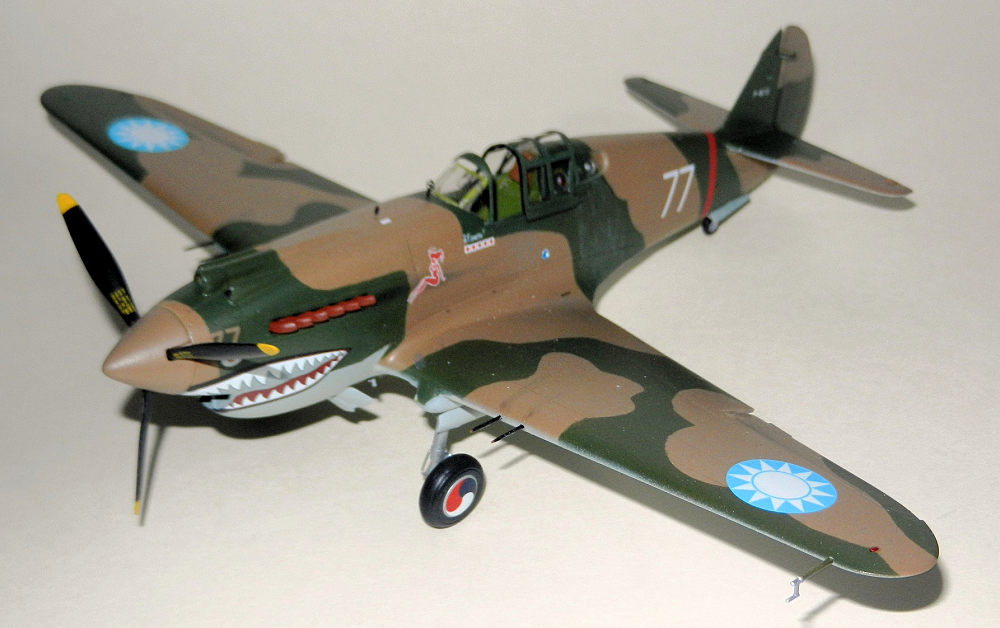
Trumpeter 1/48 P-40B Warhawk
| KIT #: | 02807 |
| PRICE: | $29.95 SRP |
| DECALS: | Two options |
| REVIEWER: | Pablo Calcaterra |
| NOTES: | Sky Models 48047 decals. |

| HISTORY |
1/48 Hawk 81 / P-40B – AVG 3rd Squadron Hell’s Angels
Robert T Smith was born in York, Nebraska on February 23, 1918. When his father was hired as Superintendent of Schools the Smith family moved to Red Cloud in 1927. RT graduated from Red Cloud High School in 1935 and continued his studies at the University of Nebraska and then joined the USAAC in 1939. The future ace and famous pilot Robert L Scott gave him a couple of check rides. Smith was commissioned as second lieutenant in June 1940 and became a basic flight instructor. He was very experienced flying trainers by the moment he resigned his commission in July 1941 to join the AVG. A new edict had decreed that pilots taller than 5 feet would not be fighter pilots and as RT was more than 6 feet tall his hopes to become a fighter pilot were squashed. When he read in Time magazine that the Chinese were recruiting 100 pilots to fight against the Japanese RT and his colleague Paul Greene did some enquires, got the address of the recruiter and after sending them a message stating their experience met Skip Adair a week later. They were turned down because they had only experience in BT-9s. They met Adair the following day with a bottle of I.W.Harper and after drinking a lot they managed to convince him to join the AVG (not the only guys who succeeded in joining with this trick during meetings with Adair).
Like Ed Rector, Tex Hill and others they crossed the Pacific in the Bloemfontain and after boarding the Penang Trader they arrived in Burma on September 15, 1941. Two days later RT took to the sky on a P-40 for the first time after Neil Martin explained him the basics of this powerful fighter. As RT was so tall they had to push the seat as far back as it could go and the rudder pedals to the forward top. It was still a tight fit but after taking off RT “was chuckling and grinning to myself like a kid with a beautiful new toy”.
Planes were assigned and RT picked “77” after his football hero Red Grange – Lucky Sevens in the 3rd Squadron (Hell’s Angels). When around mid-November the pilots saw pictures of DAF shark mouthed P-40s they decided to copy the scheme. When his plane was painted this way RT recorded “Looks mean like hell”.
When war broke in the Pacific Chennault designed the 3rd Squadron as the “assault echelon” and the planes were made ready at the south end of Kyedaw airfield. On December 11th the Hell’s Angels were sent to Mingaladon as Chennault considered them to be the most combat ready AVG Squadron. RT found the accommodations much better than in Toungoo.
On December 23rd
RT saw action for the first time. Along with other pilots waiting in the Alert
Hut they heard from the RAF that the Japanese were coming. They sprinted to
their planes while they called the other pilots of their section. Only 4 were
available leaving 2 planes on the ground. Dupouy flew the second section with
his 6 planes. Edmund and Overend, not on duty that day, found the 2 planes from
the first section and also took off after the attackers. The Japanese raiders
consisted of 3 formations of Sallys, one of Anns and Nates escorting them…in all
close to 100 planes. Facing them there were the Buffaloes of RAF 67 Sqn and 12
Hell’s Angels led by McMillan. The RAF fighters attacked the unprotected Sallies
first (they had decided not to wait for the single-engined bombers and fighters)
and then McMillan dove on the
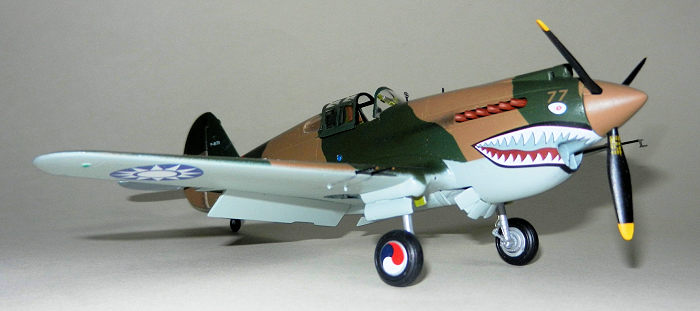 Japanese
bombers. When it was the turn of RT he used his tracers to aim better but found
that deflection shooting was really too hard and was not hitting the bombers.
Therefore he changed his tactic and attacked them from behind and below, taking
his time while at the same time scanning the sky around him. His bullets hit a
Sally hard and it exploded in front of his face flipping his P-40 upside down.
After this he was attacked by 3 Nates and RT turned and after shooting at their
leader he dove straight down to shake them off. Then along with another AVG and
a Buffalo he pounced on a Sally that was flying lower with a damaged engine
(during the first attack by the RAF). When Smith run out of ammo the Sally was
trailing smoke and going down at a 30 degree angle. After the action was over
the first section had claimed 5 planes and the RAF 6 when actually only 5 out of
15 of the Sallies of the first formation were lost (the other 10 were also
damaged to different degrees). No Allied plane was lost in this first
engagement. When the 2nd
section of the AVG attacked the 2nd
formation of Sallies they were not as effective shooting down one, heavily
damaging another one (and killing the Japanese Group commander in the process)
and lost a pilot (Martin) caught in the cross fire of the gunners. The 3rd
formation of Sallies attacked almost unhindered.
Japanese
bombers. When it was the turn of RT he used his tracers to aim better but found
that deflection shooting was really too hard and was not hitting the bombers.
Therefore he changed his tactic and attacked them from behind and below, taking
his time while at the same time scanning the sky around him. His bullets hit a
Sally hard and it exploded in front of his face flipping his P-40 upside down.
After this he was attacked by 3 Nates and RT turned and after shooting at their
leader he dove straight down to shake them off. Then along with another AVG and
a Buffalo he pounced on a Sally that was flying lower with a damaged engine
(during the first attack by the RAF). When Smith run out of ammo the Sally was
trailing smoke and going down at a 30 degree angle. After the action was over
the first section had claimed 5 planes and the RAF 6 when actually only 5 out of
15 of the Sallies of the first formation were lost (the other 10 were also
damaged to different degrees). No Allied plane was lost in this first
engagement. When the 2nd
section of the AVG attacked the 2nd
formation of Sallies they were not as effective shooting down one, heavily
damaging another one (and killing the Japanese Group commander in the process)
and lost a pilot (Martin) caught in the cross fire of the gunners. The 3rd
formation of Sallies attacked almost unhindered.
On December 25th the Japanese came again after licking their wounds from the 23rd. It was still and impressive display: 63 Sallies escorted by 25 Nates and Hayabusas. Today there were 13 P-40s and Oley Olson sent them in two formations lead again by Dupouy and McMillan. RT was in the first formation and after attacking the Japanese in a single line/string the P-40s scattered all over the place. In the ensuing combat RT Smith claimed two bombers and a fighter. Duke Hedman became ace in a day and the total number of claims was 15 Sally and 3 fighters…with only 5 Sallies shot down (3 over Burma and 2 crash landed) and no Hayabusa. Taking into account the second flight of AVG fighters and those of the RAF claims totaled 28 ½ …with only the 5 bombers and 2 Hayabusas and 3 Nates were actually lost…almost a 3:1 ratio over-claim.
Early February 1942 the AVG received 6 brand new P-40Es that had to be picked up from the Gold Coast in Africa (now Ghana). It took the pilots 12 days and 7,500 miles (as passengers of CNAC and BOAC) to reach on February 28th the place where their new planes were waiting. Smith painted his plane with large white “1” and smaller “R.T” on the fuselage along with dorsal section of it. The planes still sported the round red circle in the middle of the US star. Smith said that the planes were “quite a little nicer than Tomahawks” and that had a better cockpit arrangement along with more speed, power and guns. The flight back to Burma was not an easy job with all planes experiencing problems…Smith the most with the prop control going out, all electrical systems going haywire…once this was fixed the hydraulic system went U/S. He arrived in Cairo on March 11th were the others were waiting for him. Along with 3 other of pilots they arrived in Kunming via India and Burma on March 22nd. Almost a month away from their base!
On March 27th
Smith and three other ferry pilots were told to go to Loiwing (China) where the
CAMCO factory was located. Here he found that his trusty old “77” had been
destroyed during a scramble when
 the ignition system failed. Dick Rossi was the
pilot on this occasion and later on Smith said he had not quite forgiven Rossi
for the loss of his Lucky Sevens.
the ignition system failed. Dick Rossi was the
pilot on this occasion and later on Smith said he had not quite forgiven Rossi
for the loss of his Lucky Sevens.
Late March the AVG pilots were told to fly loathed morale missions (showing their CAF stars to the soldiers in the front).
When a Japanese fighter raid on April 8th targeted Loiwing 12 P-40s took off to challenge them. 15 Hayabusas against 12 P-40s. Smith picked an Oscar that was completing a strafing run and from 300 yards behind he opened fire. The Japanese fighter turned upside down and crashed into the ground in a ball of flames. He then saw an Oscar chasing a P-40 that was chasing another Oscar and saved his fellow pilot by forcing the second Oscar to abort his attack. Getting on the tail of another fighter Smith rolled with him and fired his guns hitting the engine of the Oscar that billowed flames and smoke. The AVG claimed 11 or 12 kills with the 64th Sentai losing only 4…but some of these were very experienced pilots from earlier campaigns.
Two days later the Japanese caught the Allies on the ground and the 5 Japanese fighters damaged 9 out of the Tomahawks, Warhawks and Hurricanes on the ground (only one failed to fly ever again). When the 64th Sentai returned in the afternoon for the know out punch nine Oscars were attacked by 5 P-40s and after damaging one Hayabusa in a hide-and-seek combat among the clouds Smith shot down another one that dove straight in to the mountains below. For the victories over 2 Hurricanes the Sentai had lost four more planes with two pilots injured and 2 killed. Ever since the 64th Sentai led by Colonel Kato started fighting 5 years earlier against the Soviets, Chinese and the Western Air Forces they had never came 2nd best to anyone and now in only 3 combats against the AVG they had lost 8 pilots out of the 30 killed since the beginning of the war.
Towards the end of the month (April 25th) Smith’s flight spotted 2 Sonia observations planes that were attacking a Chinese column and he shot down one and shared the destruction of the second one.
Five days later he flew top cover with P.J. Greene for a flight of 15 P-40s led by Tex Hill. Finding seven Oscars in a bid defensive Lufberry circle smith and Green dove on them and attacked without success. Using their speed they climbed above the Japanese, dove again and claimed two shot down in flames at the same time. When this combat was over Smith and Greene heard over the radio that the Japanese were attacking Lashio. They found nothing and then went on to try to intercept the bombers that were returning from Loiwing. Again they found nothing but now they were low on fuel and tried to make it for the 3rd Squadron’s new base (Mangshi) but RT’s tanks run dry and he did a force landing in a pasture where a hidden ditch destroyed the landing gear. He was able to finally return to base on a Chinese truck full of casualties. Hill’s planes engaged a formation of 27 bombers and 15 fighters that were heading to Loiwing and claimed 11 kills. In fact for the loss of no Panda Bear or Hell’s Angels planes the 64th Sentai had again lost the battle with 2 planes shot down (not 11…)
 Paoshan is located about 130 miles
from the Burma border and it became the AVG’s forward base. There were no more
Allied ground troops in Burma. Now the Japanese were threatening crossing the
Salween River into China and the AVG stopped them in their tracks with the new
Kittyhawks strafing and dive bombing the Japanese columns. The Hell Angel’s flew
ground sweeps and top cover for the Salween missions Also in May RT Smith
participated in an attack of a train line at Lao Kai.
Paoshan is located about 130 miles
from the Burma border and it became the AVG’s forward base. There were no more
Allied ground troops in Burma. Now the Japanese were threatening crossing the
Salween River into China and the AVG stopped them in their tracks with the new
Kittyhawks strafing and dive bombing the Japanese columns. The Hell Angel’s flew
ground sweeps and top cover for the Salween missions Also in May RT Smith
participated in an attack of a train line at Lao Kai.
When the Flying Tigers flew a mission on May 28th to try to ambush the Japanese bombers that were bombing Paoshan regularly they found nothing…but RT Smith took the series of snapshots of his fellow Flying Tiger planes that are now famous. When they landed Smith and Older were decorated by the Chinese for their role in the combats over Rangoon. A few days later the AVG ceased to exist. RT Smith was credited with 8.73 kills.
He flew to Calcutta in a CNAC plane on July 4th and returned to rest in the US. He had some fun with his buddy Bill Reed before deciding to join the First Air Commando Group as a Major, supporting British commando operations behind Japanese lines.
RT returned to the United States in the late spring of 1944 and was assigned as Director of Flying Training with the 441st Army Air Force Base Unit at Van Nuys, California, a P-38 training base.
He became a TWA pilot and later started to write scripts for Lum and Abner, the Clyde Beatty Show among others. He also wrote a script for a movie, co owned a toy manufacturing company and worked as a Sales Manager at Weatherby’s Inc.
Then in 1955 he joined Lockheed and served as a lieutenant colonel in the Air Force Reserve from 1949 to 1966.
He died at age 77 (the number he had selected for his first P-40 in the AVG) of lung cancer on August 21, 1995.
Besides his role as a fighter pilot in the AVG RT Smith is very well remembered for his contribution to the history of the Group. He enjoyed taking pictures of the planes, pilots and places where they served. He started with a camera borrowed from Bill Reed and some of the pictures were taken with Kodachrome (something new at the time). He then bought a camera with film in November 1941. In February he purchased a Leica with three rolls of Kodachrome. Had it not been for him our visual knowledge of the AVG would have been much poorer.
| THE KIT |
For a comprehensive review check Matt Swan’s review here
| CONSTRUCTION |
I decided to build a P-40 from each one of the 3 AVG squadrons. The 1st Squadron would be based on the oldest kit (Revell), 2nd Squadron based on the next kit released (Hobbycraft) and the 3rd Squadron using the Trumpeter kit. I really detested 3 things on the Trumpeter kit: the raised access doors, the rivets and the shallow cockpit. Besides those “details” a more advanced kit with more details than the Revell and Hobbycraft ones.
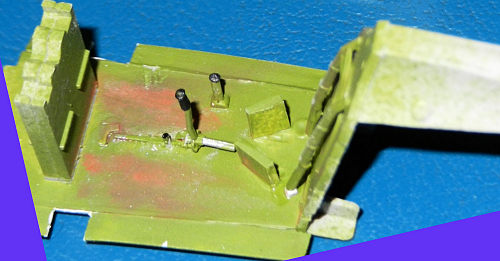 I
started by marking the edge of the access doors with a knife and then sanding
them flush with the skin. Then all the rivets were covered in Tamiya putty and
sanded thus eliminating them. This took care of the first 2 problems.
I
started by marking the edge of the access doors with a knife and then sanding
them flush with the skin. Then all the rivets were covered in Tamiya putty and
sanded thus eliminating them. This took care of the first 2 problems.
In regards to the cockpit I first eliminated the locating squares for the floor as these sit too high. Then when I calculated where the floor should really sit (actually it was part of the top surface of the wings) I added and extension made with plasticard to the bulkhead. The seat and instrument panels came of the True Details photoetch set…much better than the puny Trumpeter ones. I scratch built the reflector light for the gunsight (on the floor) and also had to add some plasticard to the sides of the floor as now it was sitting lower within the fuselage…in an area where the walls are farther apart from each other. A gap therefore had to be eliminated and I used two strips of plasticard on each side. The sidewalls are made with strips of Evergreen and the above mentioned photoetched set. Everything was given a coat of Interior Green and details were picked using aluminum, black and brown sanded pastels, etc. I added the 50 cal machine guns making them stick thru the holes on the nose and scratch built the back of them using round section plastic. I also installed two squares of plastic under the seat to hold it in place. Only lap seatbelts were added to the seat. The cockpit was inserted in to the fuselage from below.
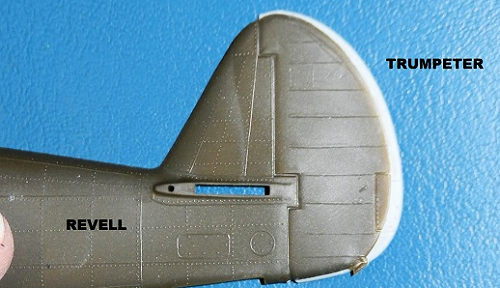 I
also sanded the rudder as it is too large and added the shaft/rod on which it
hinges on the tail using a piece of plastic from the spares. The tail horizontal
tails are not good enough with a P-36 profile (as far as I understand) but
unless I bought an aftermarket set there is not too much that I could do.
I
also sanded the rudder as it is too large and added the shaft/rod on which it
hinges on the tail using a piece of plastic from the spares. The tail horizontal
tails are not good enough with a P-36 profile (as far as I understand) but
unless I bought an aftermarket set there is not too much that I could do.
The big air intake under the nose was built and I used the photoetched screens supplied by Trumpeter. Like on my Hobbycraft kit I decided to display this P-40 with the “cowling” flaps in the open position (which means that I had to add some pieces of thin plastic cut in triangles to fill the gaps). There is also another photoetched part that covers the hole in the back of the fuselage in the flaps area.
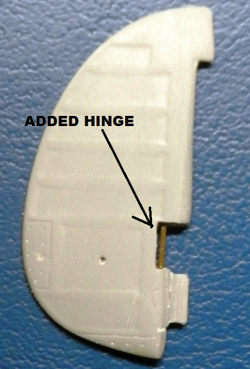 Also
after looking at the Airfix kit at the local IMPS meeting I realized that the
Trumpeter is missing the change in the angle (upwards) on the bottom of the wing
tips. To achieve this I sanded the tip of the bottom halves in a shallow angle
and then made a deeper incision along the panel line that runs at the end of the
wing tip. This I bent upwards a bit and after some more sanding I achieved a
look that I liked. Now the bottom of the wingtips moves up at a steeper angle
than the rest of the wing. I also scratchbuilt the little “stops/deflectors”
(?!) behind spent cartridges exits under the wings.
Also
after looking at the Airfix kit at the local IMPS meeting I realized that the
Trumpeter is missing the change in the angle (upwards) on the bottom of the wing
tips. To achieve this I sanded the tip of the bottom halves in a shallow angle
and then made a deeper incision along the panel line that runs at the end of the
wing tip. This I bent upwards a bit and after some more sanding I achieved a
look that I liked. Now the bottom of the wingtips moves up at a steeper angle
than the rest of the wing. I also scratchbuilt the little “stops/deflectors”
(?!) behind spent cartridges exits under the wings.
There is a frame missing central on the sliding hood. This I scratchbuilt with Evergreen and added some subtle rivets on the surface. With tissue paper I created the fabric cover of the wheel wells. And finally I scratch built a couple of missing tabs on the ailerons.
The wings went on the fuselage with a little bit of putty needed where they meet. Typewriter corrector fluid was used to fill some gaps especially on the panels on the top of the nose. I masked the wheel wells, flaps area (both previously painted in Chrome Yellow) and the fuselage. With not too much work I was ready to paint the plane.
| COLORS & MARKINGS |
I used scale plans from Tullis’ book to make a template of the cammo pattern. A coat of light grey was used to check for any imperfection. There has been a lot of debate (just check the Web!) about the actual colour of these planes. They were, clearly, a close match (or as close as Curtiss wanted to stretch their efforts) to the RAF colours.
The undersides were painted with ModelMaster Acryl 4693 which is an excellent match of the original colour. I extended the undersides colour to the sides of the nose as “77” had the insides of the mouth painted in the same colour. I then took the decals for the mouth, copied the profile on both sides using Tamiya masking tape and covered the area that would become the mouth thus protecting the light grey in the area. With this masked and I painted the light brown (ModelMaster Acryl 4709). Once dried, I barely sprayed a very light and much diluted coat of Sand (ModelMaster Acryl 4711) as the pilots described a faded out cammo especially on the wings, tail and fuselage spine (not so much on the fuselage sides)
Then it was time to mask the brown using the template mentioned above cut in Tamiya tape. I made the 77s on the nose using my own numbers cut on Tamiya masking tape and applied over the Brown. The green (ModelMaster Acryl 4726) was applied followed by a very diluted and light coat of a darker shade of green (ModelMaster Acryl 4729) as the green turned a darker/bluish tone when exposed to the sun.
Propeller is black with yellow tips. I used a thin black pencil to highlight the moveable surfaces and my typical sanded black pastels to give them a little bit of dirt. Same method was used for the machine guns and exhaust stains.
All formation lights were first given a drop of light grey, followed by silver and then a drop of Future with a touch of blue (fuselage) or clear red or blue for the wings. White was used for the ones on the tail.
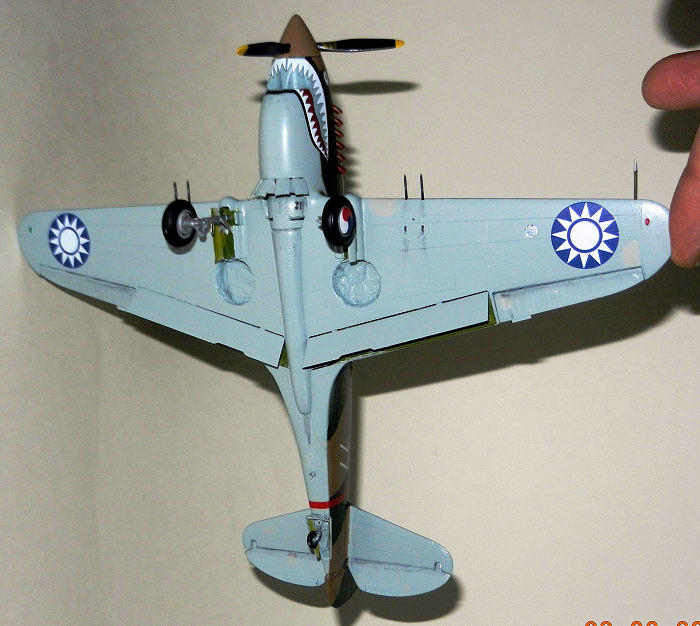 The caps
behind the pilot were painted in red and aluminum. Another tricky part was to
simulate the dirty pattern created by the overflowing fuel below these caps. For
this I used water with a drop of white and then put a tiny amount of this
mixture on the fuselage blowing it downwards. It was repeated several times
until it looked dirty enough with a help of a damped Q tip.
The caps
behind the pilot were painted in red and aluminum. Another tricky part was to
simulate the dirty pattern created by the overflowing fuel below these caps. For
this I used water with a drop of white and then put a tiny amount of this
mixture on the fuselage blowing it downwards. It was repeated several times
until it looked dirty enough with a help of a damped Q tip.
I added damage, wear and tear and chipped painted along with some light grey (for the repairs on 77 under the wings) and repairs to the tail and rudder using a different tone of green.
Exhausts were painted using Rust colour and the openings black. Once I removed the masking tape I found that my 77s were not nice at all…too fat and irregular. Therefore I overpainted them with green as I found that I had some decals that would play the part perfectly…read on below. The kit was given a coat of Future and was ready for the decals.
In terms of decals I found the Sky Models ones to be very good and accurate and most of the ones used on my kit came from it along with some from the HC kit itself. They reacted perfectly to Set and Sol solutions. I used some light blue roundels for the top of the wings (but not as light as on “7” – my Revell kit). The red ID band came from the HC kit.
Contrary to what I had to do with “48” (Hobbycraft) I did not have to use a knife and patience to remove part of the tongue (it was too large sticking out the back teeth) before applying it. In this case the decal is perfect but it took a lot of work to position it properly and make it match the light grey I had already painted for the interior of the mouth. I also found that the black lips did not go around the main intake so I had to take parts of lips from other mouths present in the decal sheet to make this part.
The eyes on Smith’s plane had an apparently light grey circle centered on the red pupils. I found a couple of correct decals in my spares and added them on top of the red of the eyes. As I did not have the Prestone one located on the nose I just cut a white rectangle minus the letters of course.
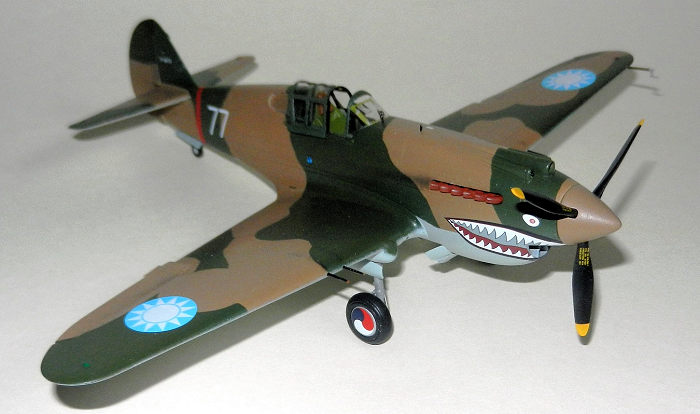 The wheel
hubs had been painted in aluminum and now were covered with the 3 coloured disc
of the 3rd
Squadron. Finally in terms
of decals I found that I had enough “7”s from a set of Aerocalcas decals
(Hercules C-130 in 1/72 scale) and they fit amazingly perfect the shape and size
of those on Smith’s beloved plane.
The wheel
hubs had been painted in aluminum and now were covered with the 3 coloured disc
of the 3rd
Squadron. Finally in terms
of decals I found that I had enough “7”s from a set of Aerocalcas decals
(Hercules C-130 in 1/72 scale) and they fit amazingly perfect the shape and size
of those on Smith’s beloved plane.
Lots of attention was given to the final details. These include photoetched gunsight, the oil vents by the nun hat, two flaps opening on the first section of the nun hat (made with Evergreen), the horn on the tail (for the rudder), brake lines made with wire and pitot tube from the spares box because the correct type is not supplied by Trumpeter.
The on-the-field designed reflector gunsight was made up with clear plastic layers cut to shape following the pictures found in Larry Pistole’s book though the armoured windscreen is supplied by Trumpeter.
A drop of brown was applied to the 4 wing machine guns to simulate dope and thus my 3rd AVG P-40 was completed.
| CONCLUSIONS |
A very nice looking kit but that takes a lot of work to polish it into something that better resembles (from the surface texture point of view) the original plane.
Note: Information has come to light that there was a unit marking on the right side of the fuselage. Here is a photo with that added:
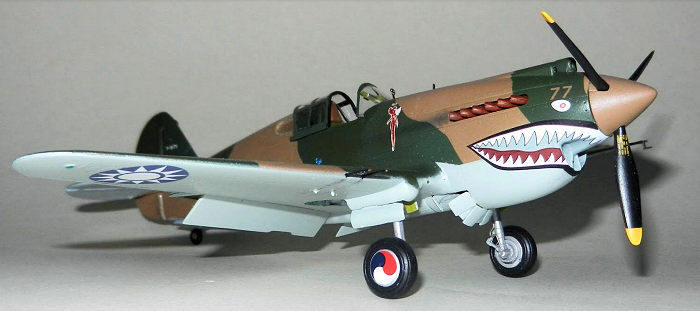
| REFERENCES |
Flying Tigers by Daniel Ford
A Tiger’s View of War in the Air by Bob Bergin
AVG Colours and Markings by Terrill Clements (Osprey)
Tigers over China by T. Tullis
Wikipedia
Pictorical History of the Flying Tigers by Larry Pistole
For great pictures taken by Smith visit this link.
3 July 2018
Copyright ModelingMadness.com
If you would like your product reviewed fairly and fairly quickly, please contact the editor or see other details in the Note to Contributors.
Back to the Main Page Back to the Review Index Page Back to the Previews Index Page